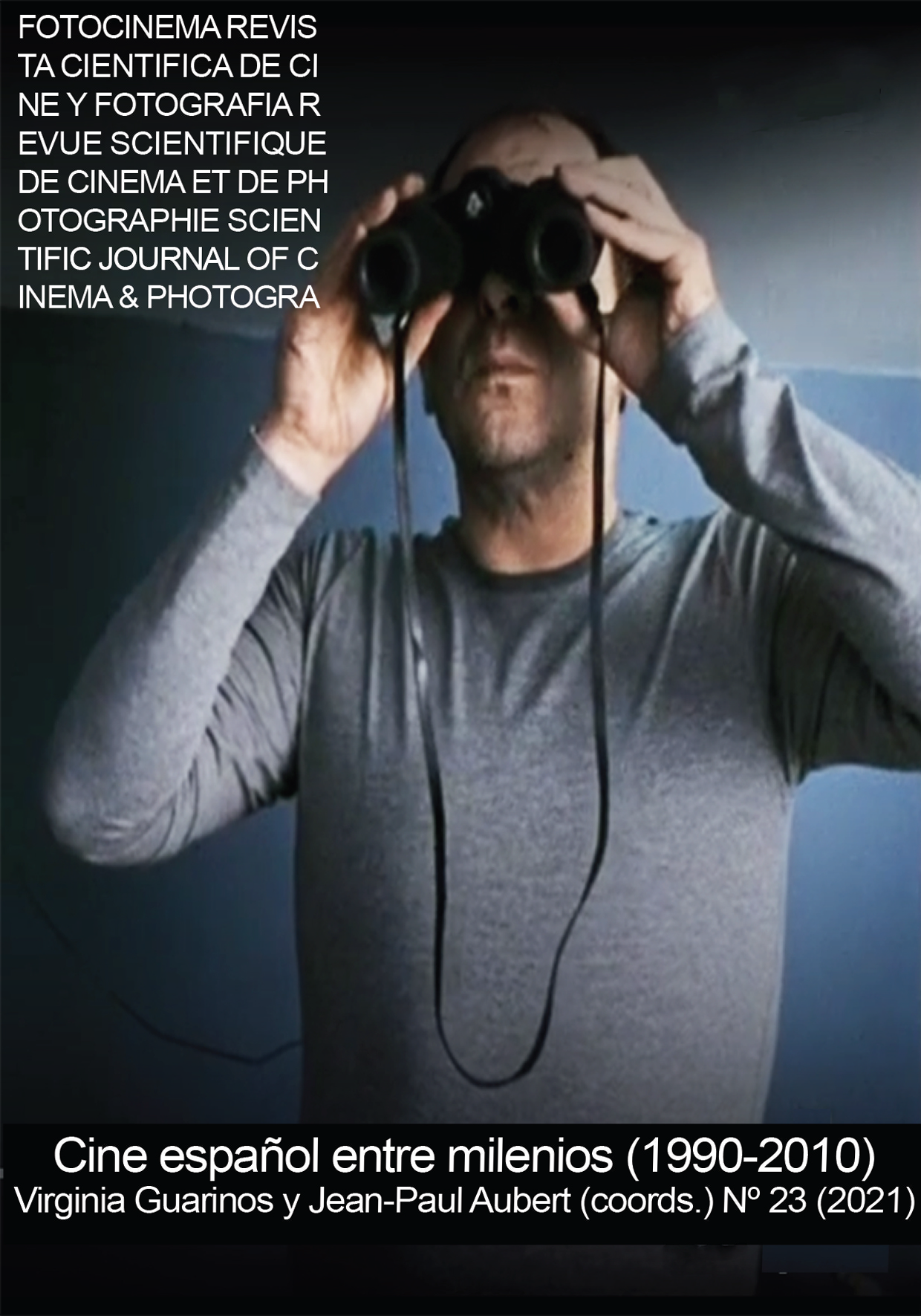The evolution of the postcard and Modern Wars: Two paths encountered (1869-1945)
DOI:
https://doi.org/10.24310/Fotocinema.2021.v23i.12374Keywords:
Postcard, modern wars, Propaganda, documental heritageAbstract
The postcard has been part of our daily life until recently. This strong presence, added to its visual and textual character, has placed it in a remarkable position as a witness of a great number of aspects that have taken place in the last 150 years of our history. Within its many fields of influence, the connection it has demonstrated with the world of war is much closer than has traditionally been attributed to it. Its release during the franco-prussian war or the high levels of production during the Great War, coinciding with its golden age, show a strong link which has not received the attention it needs. In order to determine to what extent war may have influenced the evolution of these small cards, a study is presented which focuses on the production and distribution of these media in different armed confrontations between the second half of the 19th century and the first half of the 20th century, from the Franco-Prussian War to the Second World War.
Downloads
Metrics
Publication Facts
Reviewer profiles N/A
Author statements
Indexed in
-
—
- Academic society
- N/A
- Publisher
- Universidad de Málaga
References
Almarcha, M. E., Fernández, Ó., Sánchez, I. & Villena, R. (2007). Las tarjetas postales españolas entre repúblicas (1873-1939). En. R. Villena & L. Crespo, Fotografía y patrimonio: II Encuentro en Castilla-La Mancha (pp. 22-45). Ciudad Real: Servicio de Publicaciones de la Universidad de Castilla-La Mancha.
Almarcha, M. E. & Villena, R. (2019). Las tarjetas postales como registro de la memoria histórica. Revista La Tadeo De Arte, 5 (5), 178-203.
Bürgschwentner, J. (2013). War Relief, Patriotism and Art: The State-Run Production of Picture Postcards in Austria 1914–1918. Austrian Studies, 21, 99-120.
Carlson, J. (2009). Postcards and Propaganda: Cartographic Postcards as Soft News Images of the Russo-Japanese War. Political Communication, 26 (2), 212-237.
Cowlin, J. (2014). My propaganda & satirical postcards of the Anglo-Boer War 1899-1902. Maldon: The Anglo-Boer War Philatelic Society.
Delhalle, S. (2011). L'image de la Belgique dans les cartes postales allemandes de la Première Guerre mondiale. Guerres Mondiales et Conflits Contemporains, 241, 51-62.
Guereña, J.-L. (2005). Imagen y memoria. La tarjeta postal a finales del siglo XIX y principios del siglo XX. Berceo, 149, 35-58.
Holt, T. & Holt, V. (1987). I'll be seeing you: World War II through its picture postcards. Ashbourne: Moorland.
Lara, E. & Martínez, M. J. (2009). El nacimiento de la tarjeta postal en Jaén (1902-1941): la construcción social de la imagen de una ciudad. Contraluz: Revista de la Asociación Cultural Arturo Cerdá y Rico, 6, 65-92.
López-Torán, J. M. (2017). La tarjeta postal como documento histórico: una aproximación visual a la Primera Guerra Mundial. Vínculos de Historia, 6, 286-306.
Martí, R. (2000). En campanya: les Targetes postals de la guerra civil, 1936-1939. Barcelona: Miquel A. Salvatella.
May, O. (2012). Zur Geschichte der Propaganda-Postkarte. Hildesheim: Franzbecker.
Moore, A. (2003). Postal propaganda of the Third Reich. Atglen: Schiffer Military History-Kew Gardens.
O'Connor P. & Cohen, A. (2001). Thoughts on the precipice: Japanese postcards, c.1903–39. Japan Forum, 13 (1), 55-62.
Philippen, J. (1977). Histoire et charme de la carte postale illustrée. Paris: Relié.
Rapisarda, A. (1983). Il mondo in cartolina, 1898-1918. Milano: Rizzoli Editore.
Riego, B. (2011). Una revisión del valor cultural de la tarjeta postal ilustrada en el tiempo de las redes sociales. Fotocinema. Revista Científica de Cine y Fotografía, 2, 3-18.
Riego, B. (2019). Las imágenes como fenómeno cultural: una necesaria mirada en etapas para abordar los retos actuales. Historia y Memoria de la Educación, 10, 17-49.
Ripert, A. & Frère, C. (2001). La carte postale: son histoire, sa fonction sociale. Paris: CNRS Éditions.
Sánchez, I. & Villena, R. (2010). La tarjeta postal en la historia de España. En B. Riego, España en la tarjeta postal: Un siglo de imágenes (pp. 11-51). Madrid: Lunwerg.
Schulze, I. (2013). Los medios de comunicación en la Gran Guerra: Todo por la Patria. Historia y Comunicación Social, 18, 15-30.
Sturani, E. (2003). Le cartoline per il duce. Torino: Edizioni del capricorno.
Vries, G. de. (2016). The Great War through picture postcards. Barnsley: Pen & Sword Military.
Downloads
Published
How to Cite
Issue
Section
License
All contents published in Fotocinema Revista científica de cine y fotografía are protected under the Creative Commons Attribution-NonCommercial-ShareAlike 4.0 International (CC BY-NC-SA 4.0) license. All about this license is available in the following link: <http://creativecommons.org/licenses/by-nc-sa/4.0>
Users can copy, use, redistribute, share and exhibit publicly as long as:
- The original source and authorship of the material are cited (Journal, Publisher and URL of the work).
- It is not used for comercial purposes.
- The existence of the license and its especifications are mentioned.
There are two sets of authors’ rights: moral and property rights. Moral rights are perpetual prerogatives, unrenounceable, not-transferable, unalienable, imprescriptible and inembargable. According to authors’ rights legislation, Fotocinema. Revista científica de cine y fotografía recognizes and respects authors moral rights, as well as the ownership of property rights, which will be transferred to University of Malaga in open access. The property rights are referred to the benefits that are gained by the use or the dissemination of works. Fotocinema. Revista científica de cine y fotografía is published in an open access form and it is exclusively licenced by any means for doing or authorising distribution, dissemination, reproduction, , adaptation, translation or arrangement of works.
Authors are responsable for obtaining the necessary permission to use copyrighted images.














13.png)



